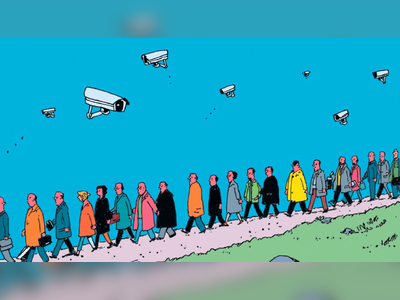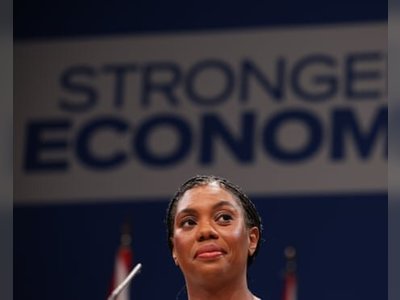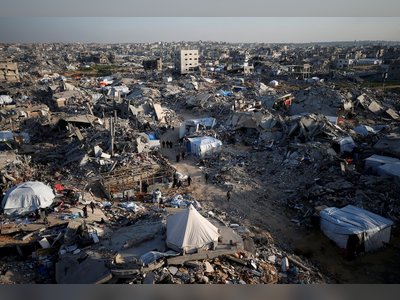Global Wealth Inequality: A Stark Contrast Between the Rich and the Rest"
A recent report by Oxfam International, released in anticipation of the World Economic Forum in Davos, reveals startling data about the growing wealth gap. The report, analyzing widening disparities in wealth distribution, highlights that since 2020, the world's five richest individuals have doubled their fortunes, while 60% of the global population has become poorer.
The Oxfam Inequality Report, unveiled just before the annual meeting of the World Economic Forum, offers a stark picture of global wealth distribution. Men hold $105 trillion more in wealth than women, a gap more than four times larger than the entire economy of the United States, the world's largest. The top 1% alone possesses over 40% of the world's financial assets.
One of the most striking findings is the time it would take for a woman working in welfare or health services to earn the annual salary of a CEO from one of the world's top 100 companies: 1,200 years.
As the world's business elite converge in Davos, Switzerland, for the World Economic Forum's annual meeting, Oxfam's report sheds light on the immense and expanding wealth gaps. Data from the World Bank, cited in the report, indicates that for the first time in 25 years, the wealth gap between the global North and South has widened.
The North, consisting of developed economies like those in Europe and America, contrasts sharply with the poorer economies of the South, including Sub-Saharan Africa, the world's poorest region. 69% of private wealth is held by residents of the global North, who make up only 21% of the world's population. 74% of billionaires, each worth at least a billion dollars, reside in these northern countries. Since the start of the decade, billionaires have enjoyed a 34% increase in wealth, a $3.3 trillion growth, outpacing inflation by three times, a key factor in the renewed expansion of global inequality.
It's crucial to note that the recent reduction in inequality didn't result from the wealthy getting closer to the majority but from lower and middle
classes in developing economies, such as China, approaching the middle classes of developed economies, which have experienced stagnation in income growth. Meanwhile, a tiny minority of the ultra-rich continued to amass wealth at a rate disproportionate to the rest of the world.
The report also discusses the two sides of price increases. For consumers, prices represent a cost, while for corporations, they are both a cost and a source of revenue. A small number of large corporations have actually benefited from these price hikes. In 2021 and 2022, the largest companies saw a staggering 89% increase in profits, with new data indicating that 2023 may set records for profitability. Over 82% of these profits will go to shareholders, most of whom are among the world's richest individuals.
This report from Oxfam comes at a crucial time, as the world grapples with growing economic disparities and highlights the urgent need for policies and practices that address this deepening divide. The contrasting fortunes of the few and the many pose significant challenges and raise questions about the sustainability and fairness of the current economic system.
One of the most striking findings is the time it would take for a woman working in welfare or health services to earn the annual salary of a CEO from one of the world's top 100 companies: 1,200 years.
As the world's business elite converge in Davos, Switzerland, for the World Economic Forum's annual meeting, Oxfam's report sheds light on the immense and expanding wealth gaps. Data from the World Bank, cited in the report, indicates that for the first time in 25 years, the wealth gap between the global North and South has widened.
The North, consisting of developed economies like those in Europe and America, contrasts sharply with the poorer economies of the South, including Sub-Saharan Africa, the world's poorest region. 69% of private wealth is held by residents of the global North, who make up only 21% of the world's population. 74% of billionaires, each worth at least a billion dollars, reside in these northern countries. Since the start of the decade, billionaires have enjoyed a 34% increase in wealth, a $3.3 trillion growth, outpacing inflation by three times, a key factor in the renewed expansion of global inequality.
It's crucial to note that the recent reduction in inequality didn't result from the wealthy getting closer to the majority but from lower and middle
classes in developing economies, such as China, approaching the middle classes of developed economies, which have experienced stagnation in income growth. Meanwhile, a tiny minority of the ultra-rich continued to amass wealth at a rate disproportionate to the rest of the world.
The report also discusses the two sides of price increases. For consumers, prices represent a cost, while for corporations, they are both a cost and a source of revenue. A small number of large corporations have actually benefited from these price hikes. In 2021 and 2022, the largest companies saw a staggering 89% increase in profits, with new data indicating that 2023 may set records for profitability. Over 82% of these profits will go to shareholders, most of whom are among the world's richest individuals.
This report from Oxfam comes at a crucial time, as the world grapples with growing economic disparities and highlights the urgent need for policies and practices that address this deepening divide. The contrasting fortunes of the few and the many pose significant challenges and raise questions about the sustainability and fairness of the current economic system.











